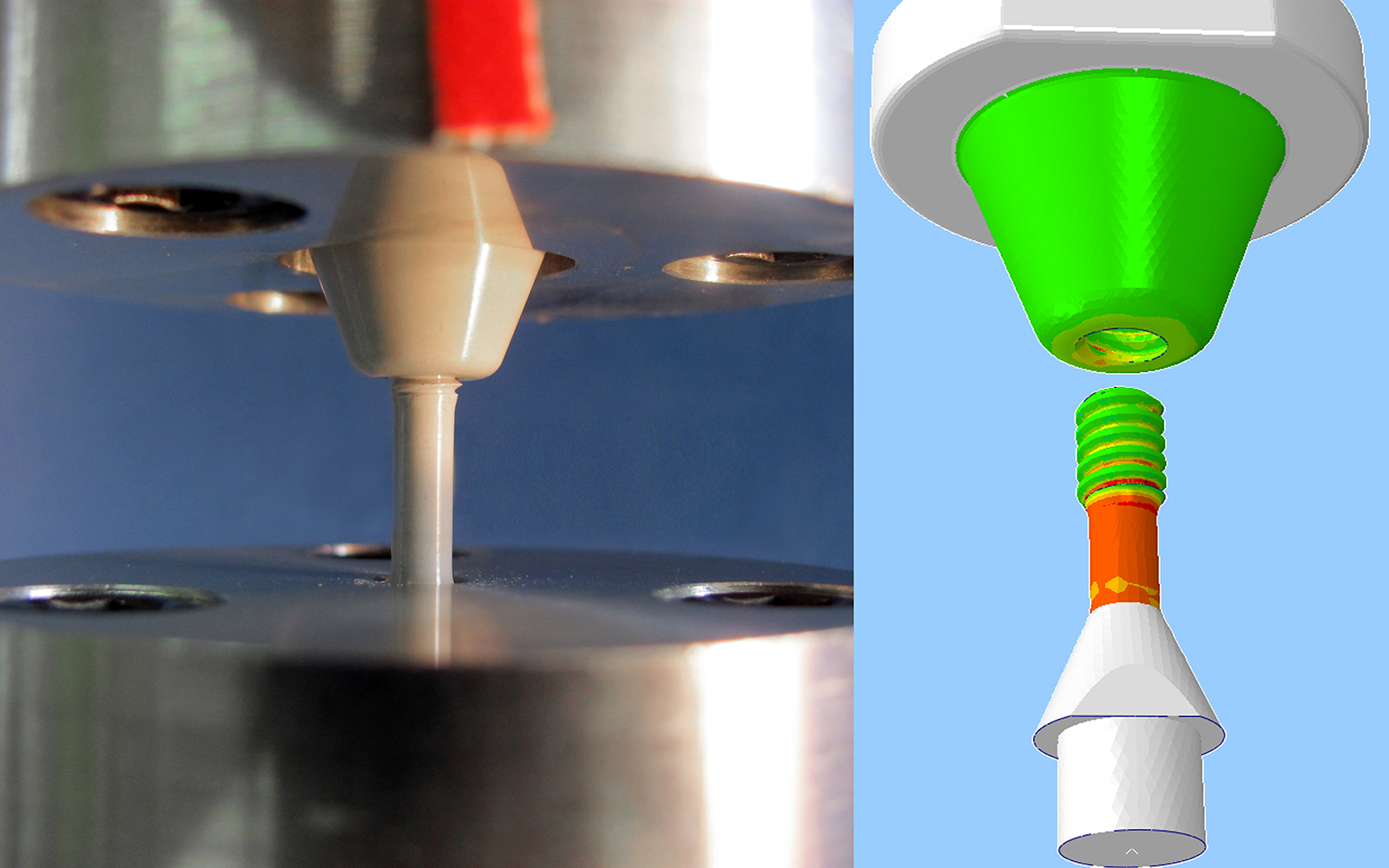Ceramic screws – corrosion and heat resistant
Most screws are made of steel. But high temperatures or acidic environments take their toll on this otherwise stable material. The alternative is ceramic screws. Researchers can now accurately predict their stress resistance.

A mere second’s distraction and you’ve stumbled over the curb. The diagnosis: compound fracture. Doctors bind the bone fragments with splints to ensure the bones knit themselves back together correctly. If metal screws are used to hold the splint in place, there is a risk of intolerance, which is why many doctors would prefer ceramic screws. Long-term implants present a similar problem. Even if something as small as one tiny screw contains metal material, it will be magnetic; this excludes all future use of computer and magnetic resonance imaging diagnostics. Outside of the hospital, ceramic screws are also a good alternative for chemical, electrical and thermal applications because they are electrically isolating and hold up well to immersion in acids and lye. Ceramic screws can also withstand temperatures over 1000 degrees Celsius, while their metallic counterparts soften at around 500 degrees Celsius. Industrial furnaces are almost entirely made of ceramic parts because of the high temperatures they must tolerate – except for the screws. “Since the weakest material limits the application, the temperature cannot be any higher than the screws can tolerate,” says Christof Koplin, a researcher at the Fraunhofer Institute for Mechanics of Materials IWM. “With ceramic screws we could finally make the technologic leap to all-ceramic solutions.”
But until now manufactures have been skeptical for an understandable reason: ceramics are notoriously brittle. Although some ceramics have a load-bearing capacity close to that of steel, once the material has been processed into the final screw form, it is estimated that only about 10 to 20 percent of the original strength remains. Until now, screw manufacturers did not know exactly what load they could support.
Screw hardness put to the test
Using a screw test rig and simulations, researchers at IWM in Freiburg and their colleagues at the Fraunhofer Institute for Ceramic Technologies and Systems IKTS in Dresden and the Institute for Machine Tools and Factory Management IWF at the Technische Universität Berlin have devoted themselves to exactly this question. “We’re testing different ceramic screws and examining how much stress they can really withstand,” explains Koplin. The project is funded by the German Federal Ministry for Economic Affairs and Energy (BMWi) and the German Federation of Industrial Research Associations (AiF).
Researchers are also optimizing the screw design. The challenge is that load capacity varies greatly even among ceramic screws of the same design; while one screw can tolerate a great deal, another breaks much sooner. The load on the screws is therefore limited by the stress that the weakest among them can withstand. The ceramic’s composition is the deciding factor – if the tiny grains that make up the substance bond incorrectly during manufacture, small cracks develop which can later cause the material to fail. Researchers have now optimized the manufacturing process so that such cracks no longer occur in any of the numerous process steps. “We were able to significantly reduce the range of the distribution curve and thus raise the stress resistance of the screws,” says Koplin. He sees significant room for improvement in the last process step, in which the screws receive their thread, either via injection molding or sanding. Until that has been optimized, screw manufacturers can turn to the IWM and consult the project team about what design best suits which targeted screw load capacity value and what the ideal manufacturing process should look like.
The researchers have also used the test rig to test the stress resistance of ceramic screws manufactured in their own laboratories. Their load-bearing capacity exceeds that of their steel counterparts by between 30 and 35 percent. “This is a huge leap forward,” says Koplin. “This would already be enough for many applications if the screw was a bit bigger.”